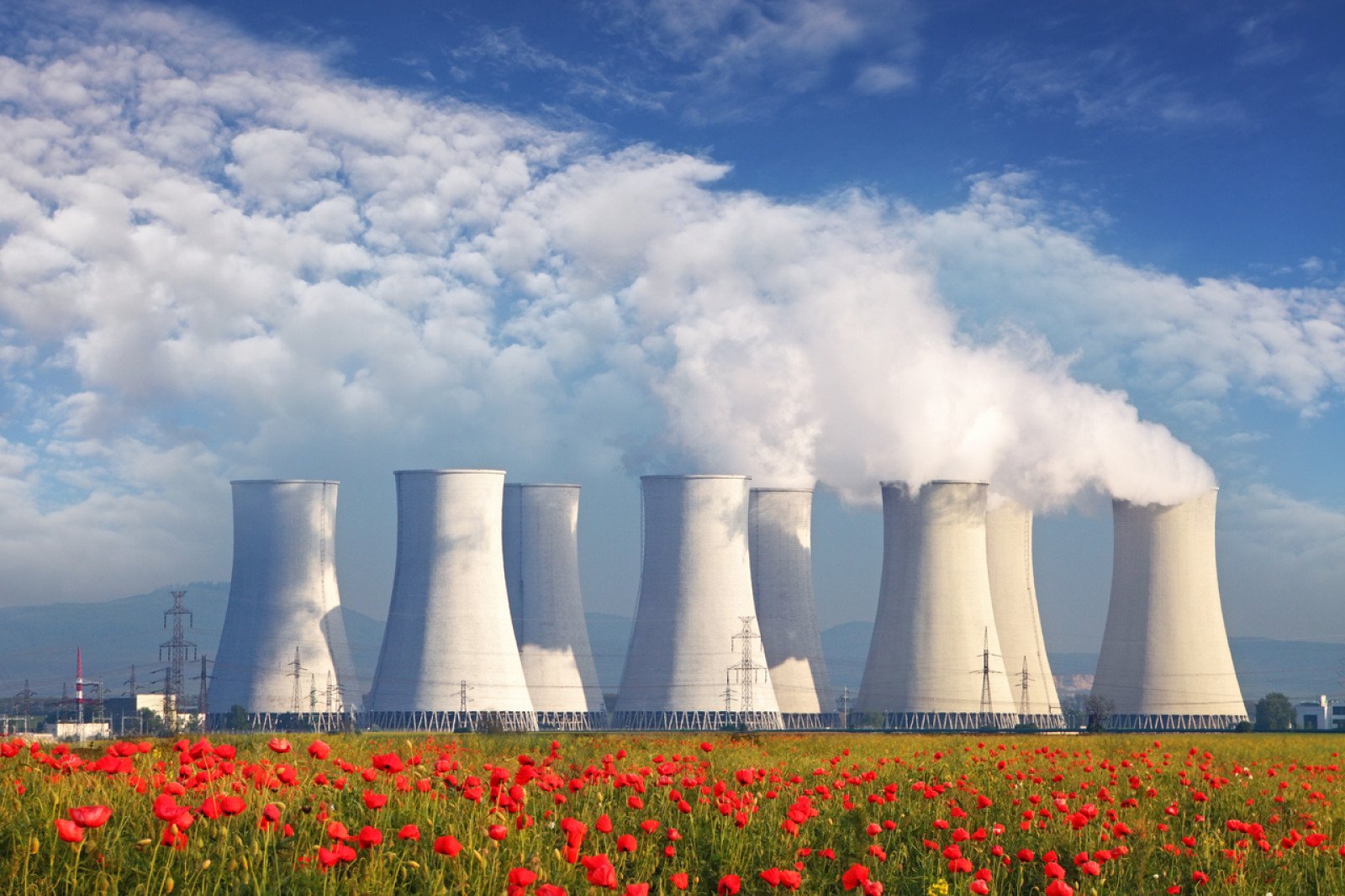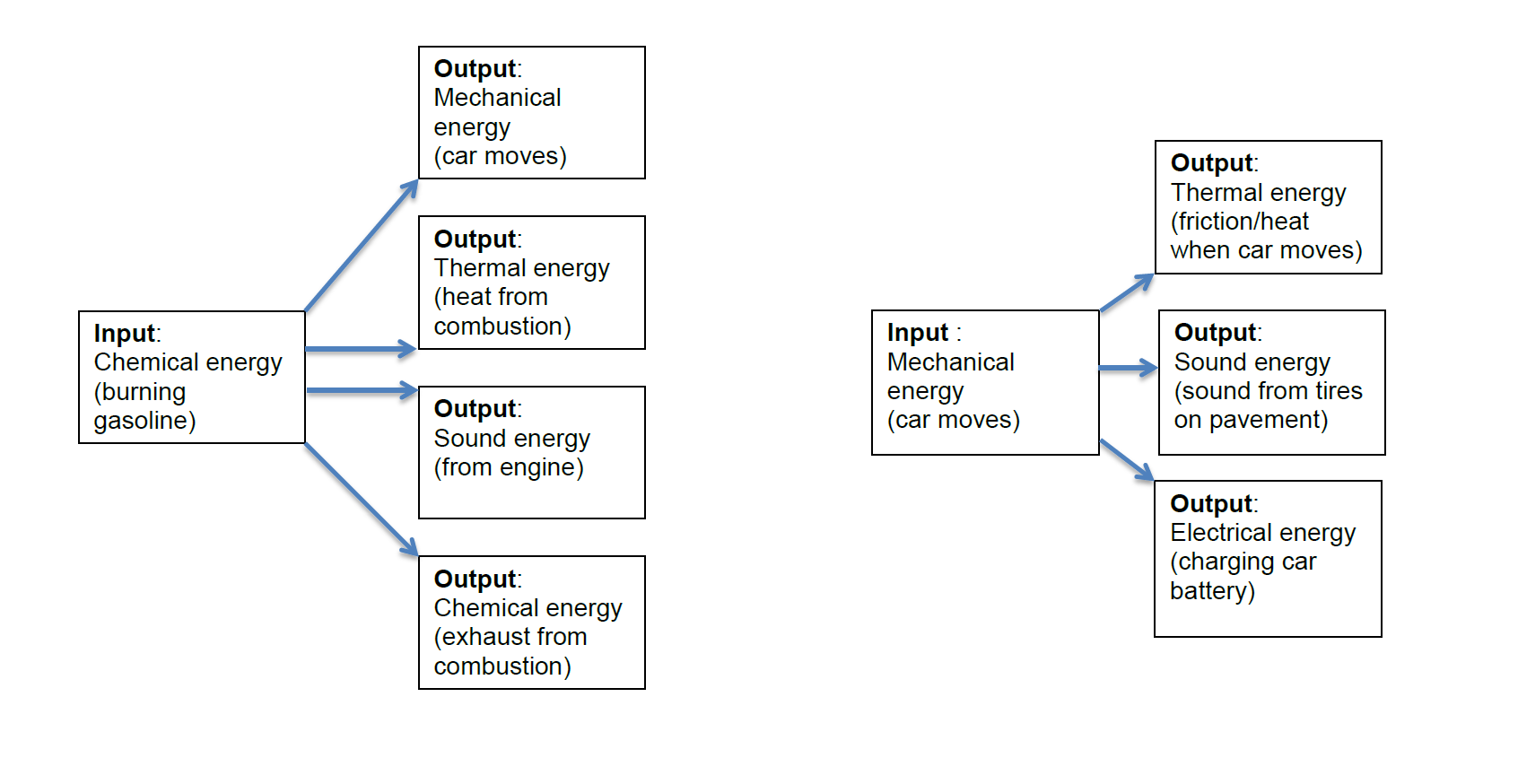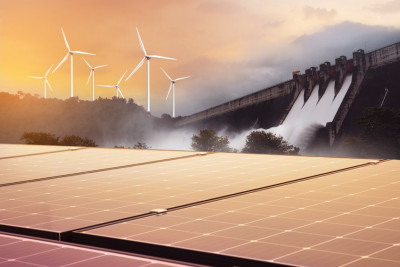The impacts of energy transformations
Rate the impact of energy transformations involved in different methods of generating electricity.

Overview
Different forms of energy are transformed to produce electricity every day. But which transformations have the most significant impact on the environment? Students come up with criteria to rate the impacts of energy transformations, then use this criteria to evaluate the environmental impacts of various methods of generating electricity.
Instructions
What you'll need
- "Spot the car energy transformations" worksheet - one per small group
- "Rating the impacts of energy transformations" worksheet - one for each student
- Organize your class into groups of 3 - 5 students and give each group a copy of the “Spot the car energy transformations” worksheet.
- Explain that because a car operates as an open system, not all the energy used by a car is used to move it. On their worksheets, students can circle and note examples of energy transformations that move a car and those that don’t.
- Share ideas as a class, filling in the worksheets as you go.
- Now ask students to consider whether these energy transformations have any effect on the surrounding environment. Groups can discuss and note these transformations on their worksheet as well.
- As students share with the class, can they suggest which effects might be the most important or significant? After students have shared, co-develop or present the criteria for a significant impact:
- Breadth: How many aspects of the environment were affected by the energy transformations?
- Depth: How deeply felt were the effects of the energy transformations?
- Duration: How long did the effects of the energy transformations last?
- Using these criteria, students can affirm or refine their earlier responses. Invite students to share their decisions, checking they understand how to use the criteria to guide their thinking.
- As a class, brainstorm ways that electricity is generated in Canada (e.g. hydro power, coal, nuclear, solar, wind generation). Have students rank the methods according to environmental impact (display the rankings for later use):
- Which method has the least?
- Which has the most?
- Now in pairs, each student gets a copy of the “Rating the impacts of energy transformations” worksheet. Assign each pair a method of generating electricity.
- Similar to the car example, all methods of generating electricity are open systems, and not all the energy inputs are transformed into electrical energy.
- Using their worksheets, ask students to:
- Illustrate all the energy transformations that occur in their assigned method of generating electricity
- Rate the environmental impacts of these energy transformations
- Encourage students to find evidence for each of the criteria to help make their decisions.
- Invite students to share their ratings and thinking with the class. As students share, encourage them to revisit the class ranking:
- What changed?
- What stayed the same?
- Conclude by asking students to describe the relationship between energy transformations and environmental impact.
Curriculum Fit
Grade 10 Science
Content
- Nuclear energy
- Law of conservation of energy
- Potential and kinetic energy
- Transformation of energy
- Local and global impacts of energy transformations from technologies
Curricular competencies
Questioning and predicting
- Demonstrate a sustained intellectual curiosity about a scientific topic or problem of personal interest
- Make observations aimed at identifying their own questions, including increasingly complex ones, about the natural world
- Formulate multiple hypotheses and predict multiple outcomes
Processing and analyzing data and information
- Analyze cause-and-effect relationships
- Use knowledge of scientific concepts to draw conclusions that are consistent with evidence
Applying and innovating
- Contribute to finding solutions to problems at a local and/or global level through inquiry
Assessments
- Assess students’ ability to work together cooperatively.
- Assess each group’s and student’s ability to make observations and inferences about the energy transformations.
- Assess each group’s and student’s ability to use criteria to rate the environmental impacts of energy transformations made during the generation of electricity.
Teaching Notes
If your students need ideas for car energy transformations, here are some examples to get them started:

All forms of generating electricity can affect the environment. These effects can generally be found in 2 categories:
- Construction effects (impacts related to the manufacturing, building, and disposal of generating equipment)
- Operational effects (impacts related to generation of electricity)
Methods of generating electricity that involve the combustion of fossil fuels are usually much less efficient than other methods, with significant amounts of the input energy being transformed into heat rather than usable electrical energy.
Examples of energy transformations during electricity generation and their environmental impacts include:
- Hydro
- Thermal effects: heat produced during generation can increase water temperature and affect plant and animal life
- Sound effects: sound produced during generation can affect plant and animal life
- Mechanical effects: vibration produced during generation can affect animal life
- Coal-fired
- Thermal effects: heat produced during generation can increase water and air temperatures and affect plants, animals, and humans
- Chemical effects: particles and gases produced during generation contribute to air pollution, influence weather and climate patterns, and affect plants, animals, and humans
- Nuclear
- Thermal effects: heat produced during generation can increase water and air temperatures and affect plant and animal life
- Chemical effects: spent radioactive fuel produced during generation can affect soil and water composition and quality
- Solar
- Thermal effects: heat produced during generation can increase air temperatures
- Wind
- Sound effects: sound produced during generation can affect humans and animals
- Mechanical effects: vibration produced during generation can affect humans and animals







